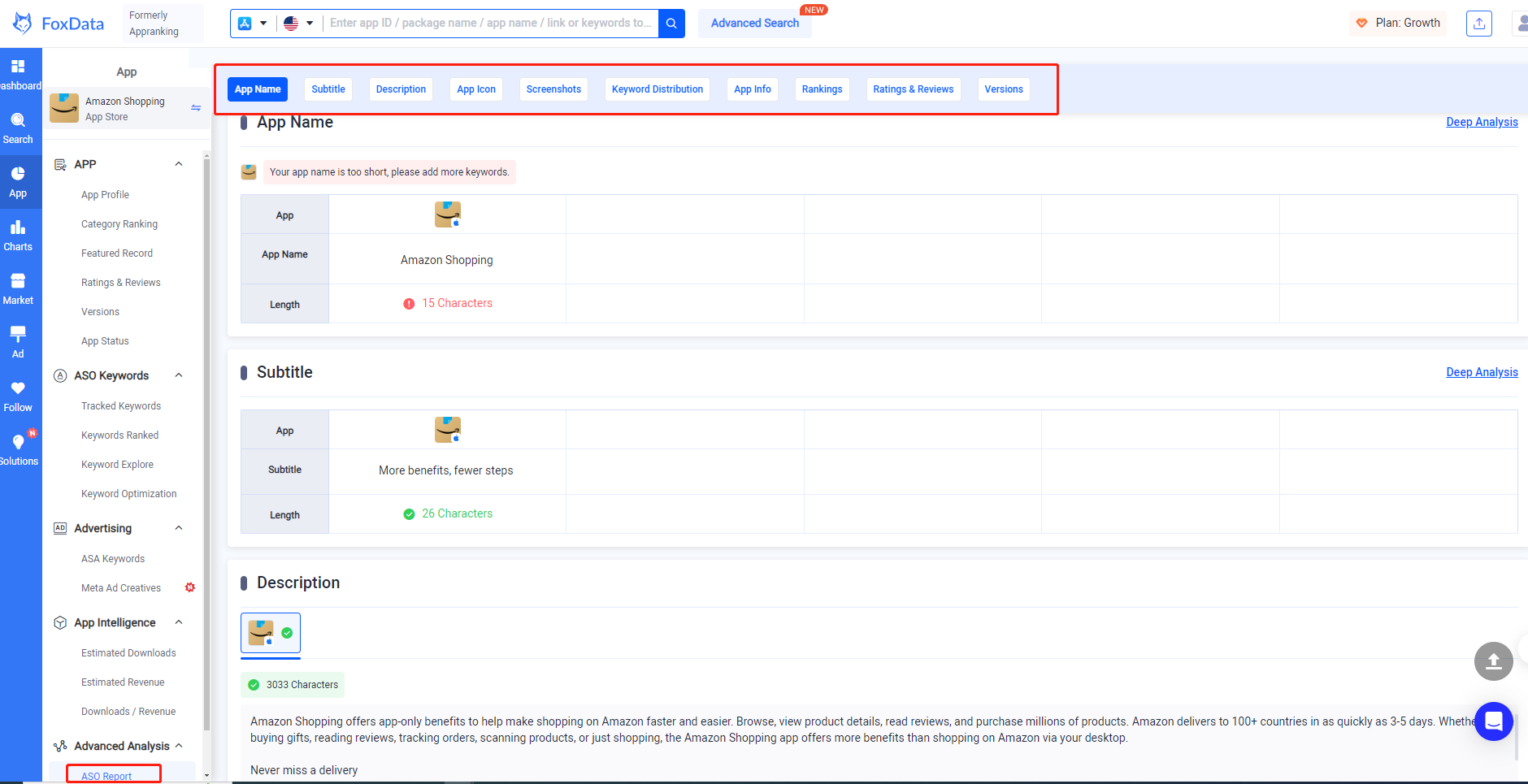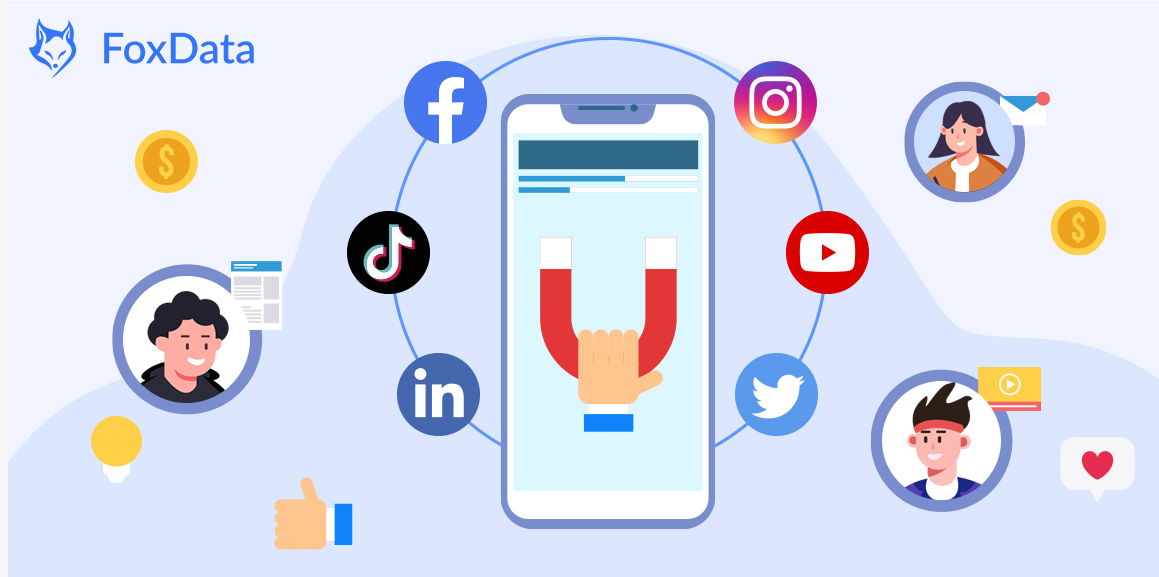👉The original blog is posted on FoxData.
In the competitive landscape of app marketing, while much emphasis is placed on user acquisition, the art of retaining users demands equal, if not greater, attention.
👉Related blog about user acquisition: How to Maximize Your App's User Acquisition Strategy for Peak Performance.
To secure the long-term success of an app, businesses must focus on user retention strategies.
What can be done to improve user retention? Here are 12 effective strategies:
- Craft an Exceptional User Experience.
- Maintain Transparency in App Store Optimization.
- Solicit User Feedback.
- Refine the Onboarding Experience.
- Integrate Social Media Login Options.
- Incentivize User Loyalty.
- Customize the User Experience.
- Deliver Outstanding Support.
- Engage in Proactive Communication.
- Provide Self-Help Resources.
- Utilize Push Notifications.
- Foster a User Community
Continue reading to understand how these strategies can significantly enhance user retention.
Strategy 1: Craft an Exceptional User Experience
A superior product is the cornerstone of user retention. First impressions are crucial; a slow-loading app, riddled with bugs or prone to crashing, will likely drive users away permanently. Conversely, a stable, user-friendly, and problem-solving app encourages repeat usage.
👏Expert Tip: Prioritize serving your users effectively. Integrate requested features, rectify reported bugs, and conduct A/B testing to determine user preferences for features, interface elements, and design.
Strategy 2: Maintain Transparency in App Store Optimization
The product page on the App Store or Google Play Store is often the first interaction between your app and potential users. Ensure that this page accurately reflects your app's capabilities and design. Misleading users to have inflated expectations can lead to disappointment and churn.
👏Expert Tip: When optimizing your app store presence, highlight your app's strengths without overstating its capabilities or resorting to falsehoods. Honesty in App Store Optimization prevents user disillusionment.
You could check your ASO Report on FoxData, as it will help highlight your app's strengths.

Strategy 3: Solicit User Feedback
To gauge user satisfaction and desires, actively request their feedback. Users generally are willing to share both positive and negative comments. Utilize this feedback to determine future feature implementations or critical bug fixes. Addressing user needs can lead to increased app return rates.
👉Explore more: What's Going on Inside Your Users' Minds? Review Sentiment Analysis Helps You Find Out.
Strategy 4: Refine the Onboarding Experience
Enhancing short-term retention starts with a smooth onboarding process. New users unfamiliar with your app can become frustrated without clear guidance. Implement an onboarding process that educates users on the app’s basic functionalities through fullscreen cards or a guided tour.
Ensure onboarding materials are accessible and straightforward, with options for users to opt out if desired.
👏Expert Tip: Additionally, onboarding can also be a strategic opportunity to increase in-app purchase revenues.
Strategy 5: Integrate Social Media Login Options
For apps that necessitate user registration, integrating social sign-in can greatly enhance the user experience. By allowing users to register or log in using their existing social media accounts, such as Facebook, Google, or other platforms, the process becomes quicker and more streamlined compared to traditional registration forms. This convenience can lead to improved short-term retention rates.
Furthermore, social sign-ins can provide valuable user data for targeted marketing campaigns. It is crucial, however, to adhere to data privacy regulations when handling this information.

Strategy 6: Incentivize User Loyalty
Rewarding users for their continued engagement with the app is a strategy widely used in the gaming industry. Offering daily rewards, such as virtual items or in-app currency, encourages users to return to the app regularly, bolstering short-term retention. For long-term retention, cumulative rewards can be offered to users who consistently engage with the app over an extended period.
Strategy 7: Customize the User Experience
Creating a personalized experience can make users feel valued and appreciated. Addressing users by their names, which can be obtained during the registration or onboarding process, adds a personal touch.
Beyond names, tailoring the app's content and features to align with individual user preferences is crucial. By analyzing user interactions and preferences within the app, you can present personalized content and offers, thereby enhancing both short-term and long-term retention.
Strategy 8: Deliver Outstanding Support
A proactive and responsive support team is crucial for maintaining user satisfaction and retention. Users who receive prompt and effective assistance are more inclined to continue using an app compared to those who encounter slow and unhelpful service.
👏Expert Tip: Develop accessible support channels within your app, such as in-app messaging, support forms, or live chat features, allowing users to seek help without leaving the app environment. At a minimum, provide a responsive email support option.
Strategy 9: Engage in Proactive Communication
Proactive communication can preempt support inquiries and enhance user satisfaction. Inform users in advance about planned maintenance or known issues that may affect their experience, along with the steps being taken to resolve these issues.
By providing this information upfront, users are less likely to become frustrated or to unnecessarily burden your support team with requests for information.
Strategy 10: Provide Self-Help Resources
While direct human interaction is often the preferred support method, it's not always feasible to offer 24/7 live support. To bridge this gap, implement self-service support tools that empower users to resolve issues on their own.Effective self-help tools include:
- Tooltips: Offer immediate, contextual assistance as users navigate through different sections of your app for the first time. Ensure that these tooltips are concise, easy to understand, and genuinely useful.
- Help or FAQ Sections: Provide comprehensive guides and answers to frequently asked questions in a dedicated help section within the app. This section should be easily accessible, with a link prominently placed in the app's menu. Introducing users to the FAQ during onboarding can also be beneficial.
- Chatbots: Deploy chatbots to offer automated responses to common queries. While setting up a chatbot can be complex, integrating a reliable third-party solution can provide users with immediate, round-the-clock support.

Strategy 11: Utilize Push Notifications
Push notifications are a powerful tool not only for engaging current users but also for re-engaging those who have become less active. To successfully use push notifications to boost user retention:
- Ensure that users have not deleted the app and have previously consented to receive notifications.
- Send notifications that provide genuine value, such as updates on new features, fresh content, or time-sensitive offers, tailored to users' past behavior.
- Avoid generic messages that lack the potential to rekindle user interest.
- Be mindful of the frequency of notifications to avoid spamming users.
- Always offer users the ability to opt out of receiving push notifications to respect their preferences.
Strategy 12: Foster a User Community
Building a community within the app can significantly enhance long-term user retention by providing users with reasons to regularly return for social interactions.
To create a community, consider integrating features such as:
-
Chats and Forums: These platforms enable user interaction, potentially reducing the support workload as users help each other. However, it's essential to moderate these spaces to prevent bullying or harassment, which can be resource-intensive.
-
Leaderboards and Rankings: Competitive features like leaderboards motivate users to engage more frequently with the app and strive to improve their performance. This approach is effective in gaming, fitness, and educational apps.
-
User-Generated Content: Encourage users to share their creations, such as art, photos, music, or writing, through the app. This not only diversifies the app's content but also inspires other users. Monitoring for inappropriate content is necessary to maintain a positive environment.
By implementing these community-building features, apps can create a sense of belonging and investment among users, leading to increased retention.
Conclusion
The array of strategies for improving app user retention is extensive. Not all strategies will be relevant or feasible for every app. Carefully evaluate which approaches are likely to yield the most significant retention improvements for your app and allocate resources accordingly.
Now just join FoxData and embark on a business growth journey as we unveil a FREE App Data Analytics Tool, which boosts your downloads, increases your user base, and watches your performance soar to new heights!
Empower your team with our App Marketing Intelligence
Free forever. Cancel anytime.


